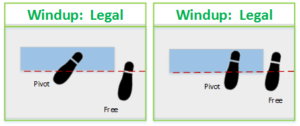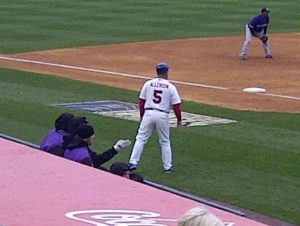Before reading this post, please take a moment to refresh yourselves on the bona-fide slide rule by reviewing our educational posts from last year, Sliding to the Base on Double Plays and Wilful and Deliberate Interference
This post is intended to discuss the mechanics for calling interference during a double play attempt. Please note that the Bona-Fide slide rule exists at ALL bases when there is a double-play attempt.
Two-Umpire System
Obviously, this call is most difficult in the two-umpire system due to the inability of the base umpire to continue to watch the initial runner’s slide into the base. The base umpire should remain with the play at the base as long as possible without jeopardizing their ability to see the play at a subsequent base. All plate umpires in the two-umpire system should be focused on and aware of the slide into the base. In the event that the plate umpire observes an illegal slide that is not detected by the base umpire, they are NOT to call the violation from home plate. Rather, they would inform the base umpire a violation has occurred via a crew-consultation. This is due to the fact that, as discussed in the aforementioned previous posts, an illegal slide must still hinder the defense’s attempt to turn the double play, which is solely the judgment of the base umpire.
Three/Four/Six-Umpire System
In systems where there are multiple umpires at the bases where the slide and secondary play will occur, the interference call is SOLELY the responsibility of the umpire responsible for the base at which the slide occurs. Except in the event of an unusual play, such as the deflected throw in an earlier post, there should be no reason to require a crew consultation in order to make this call.
Mechanics of Making the Call
Once the base umpire determines interference has occurred, they shall call “time” immediately, declaring, “that’s interference” while pointing at the runner in violation of the rule. They shall then call the batter-runner out for the interference of the runner who slid illegally. Any other runners on base would then be returned to the base they occupied at the time of the pitch. Should the inning end because of double-play interference, no runs may score. Please note that at the Major League level only, “time” is not called until after the result of the subsequent play is determined, in the event the interference call is overturned by replay review.
We will close this post with two more examples of the application of this rule. The first video is an example of a slide at third base from 2015 that would now be interference under the bona fide slide rule; the second video is an example of an illegal slide at second base that is correctly called “no-interference” because the defense was not attempting to turn a double play.
Non-Bona-Fide Slide at 3B
Non-Bona-Fide Slide (No Interference – Defense NOT Attempting Double Play)
Please note that while unfortunate and against baseball “etiquette”, the spiking of the second baseman by the runner is not illegal, as the contact was below the fielder’s knee. It is the runner’s failure to attempt to remain on the base following the slide, and that action alone, that makes this otherwise bona-fide slide illegal.



